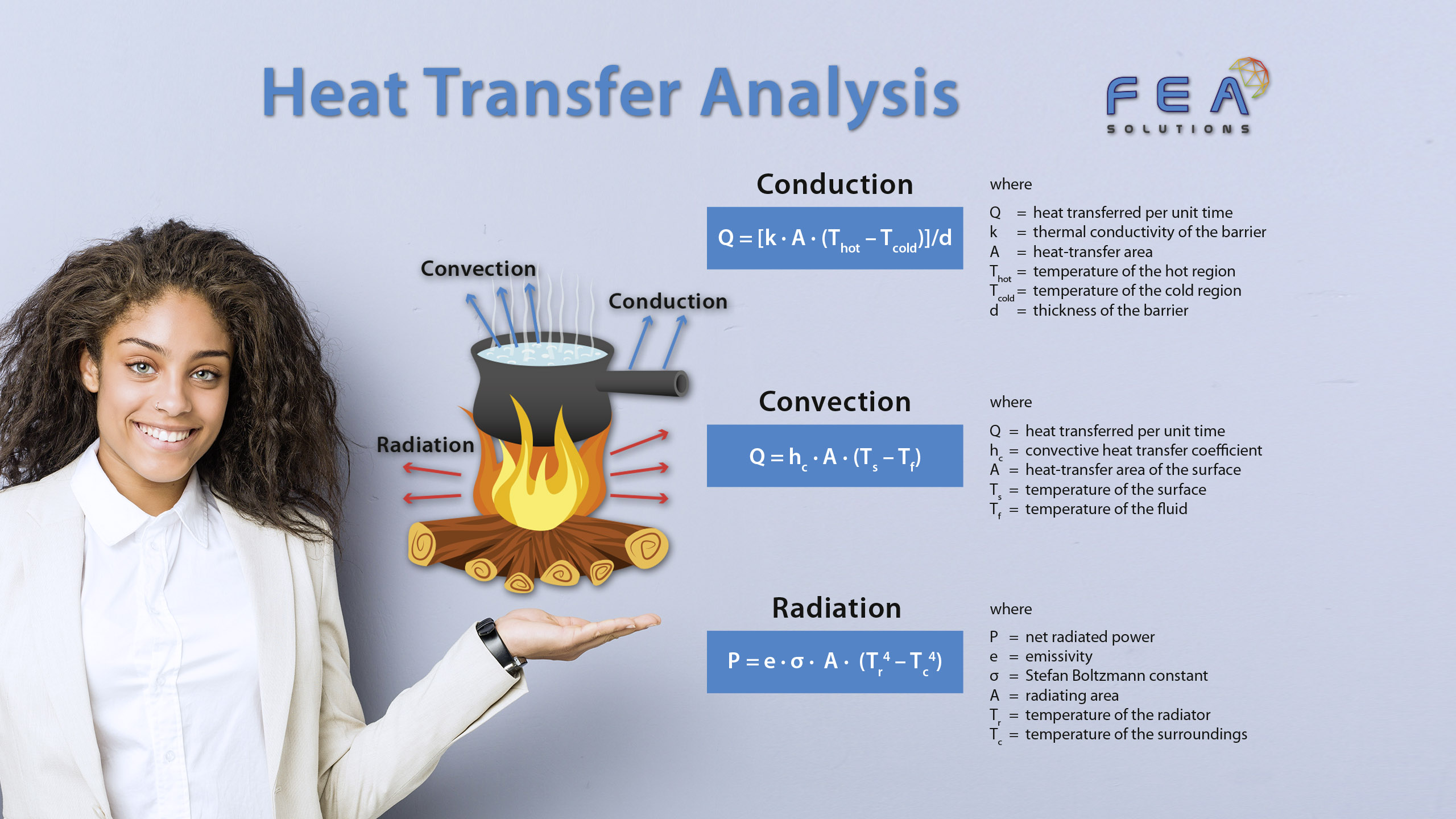
16 Feb Heat Transfer Analysis
A heat transfer analysis determines the temperature distribution in a system subjected to thermal loads. This means, results from a heat transfer analysis are temperatures. It can be either steady-state or transient, see: https://fea-solutions.co.uk/steady-state-vs-transient-analysis/.
Heat is transferred by:
– Conduction (https://fea-solutions.co.uk/conduction/)
– Convection (https://fea-solutions.co.uk/convection/)
– Radiation (https://fea-solutions.co.uk/radiation/)
For a steady-state heat transfer analysis, the following material properties are required:
– Thermal Conductivity
For a transient heat transfer analysis, the following material properties are needed in addition:
– Specific Heat
– Density
These properties are defined in various engineering standards, such as ASME or BSEN, and are temperature-dependent.
If any of the loads or material properties in a heat transfer analysis change with temperature, or radiation has to be considered, a non-linear heat transfer analysis has to be performed. A non-linear analysis will apply the loads in a number of small increments, rather than the entire load in one go.
The temperatures from a heat transfer analysis can be used as an input for a structural analysis, which is performed to find the stresses in the same system due to thermal strain. In that case, the Coefficient of Thermal Expansion of the material is required, in addition to the usual stress analysis properties.
Please call us today on +44 (0)1202 798991 for any engineering analysis requirements you might have.
